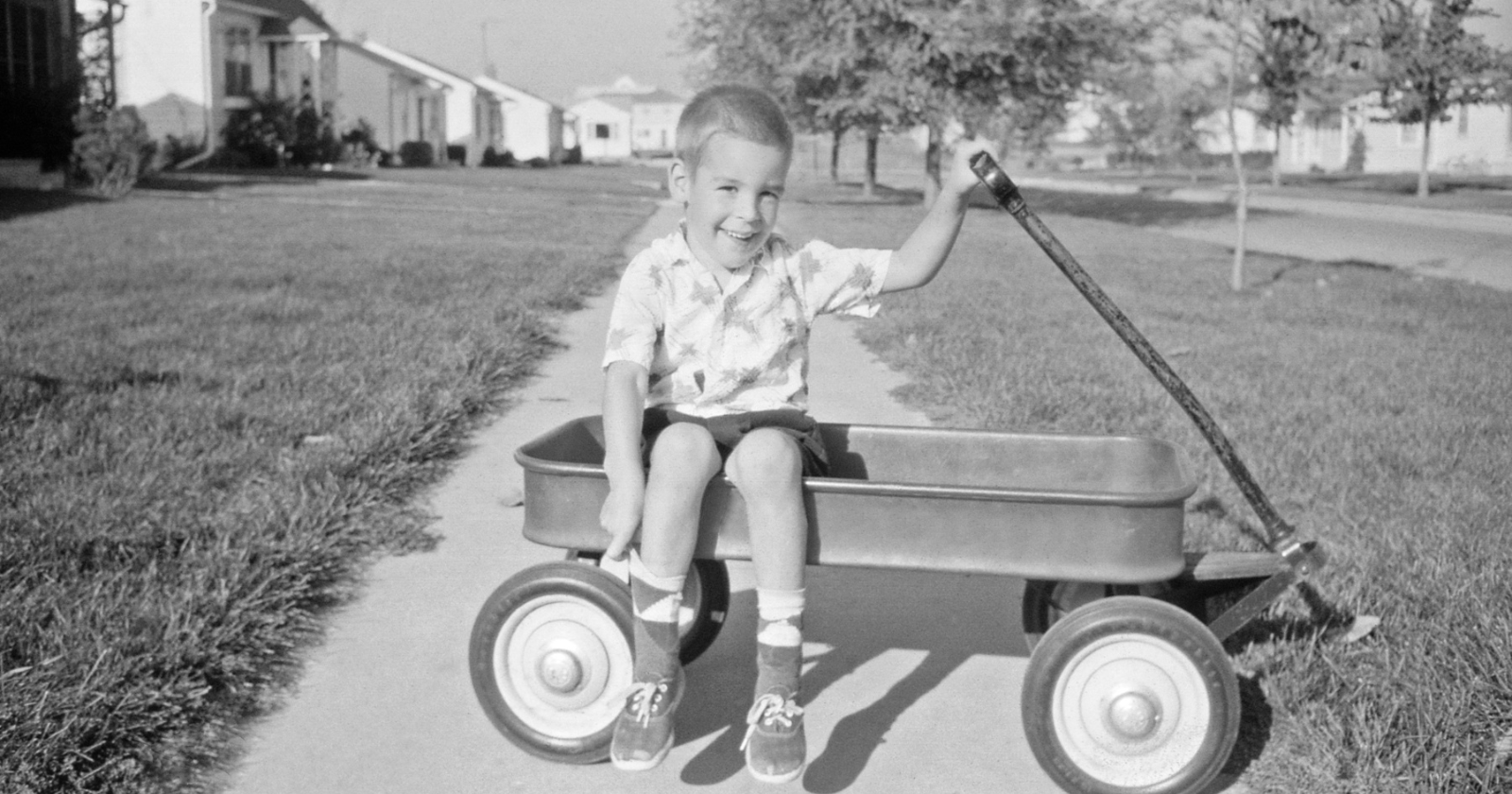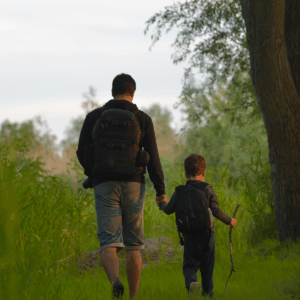A question stopped me in my tracks recently: “What did you do before smartphones when you got bored?”
How do you explain a world where boredom wasn’t something to be instantly fixed?
I’ve realized there’s a whole catalog of everyday experiences from my childhood that have simply vanished. Not dramatic historical events, mind you, but the small, simple pleasures that shaped how we lived, connected, and found joy in the mundane.
Try describing these things to anyone under 40, and you’ll get looks like you’re talking about life on another planet. And honestly? Maybe you are.
1) The milkman’s morning delivery
Picture this: waking up to the gentle clink of glass bottles being set on your doorstep before sunrise. That was the milkman, a fixture in neighborhoods across America.
About 30% of milk was still delivered to homes in the 1960s, and for those of us who remember it, there was something deeply comforting about that ritual.
Most homes had little insulated boxes on their porches. You’d leave empty bottles and a note with the next day’s order. Like clockwork, fresh milk would appear. The milkman knew everyone on his route by name, knew who was on vacation, who had a new baby.
Try explaining to a kid today that someone would come to your house every single morning just to bring milk.
2) TV stations actually signing off at night
This one blows people’s minds when you mention it.
But it’s true: television stations used to shut down at the end of the night, often around midnight. The last thing you’d see was the national anthem playing over patriotic imagery, followed by a test pattern and that awful high-pitched tone.
If you couldn’t sleep and went downstairs at 2 a.m., tough luck. There was nothing to watch except static.
Related Stories from The Artful Parent
And you know what? I don’t miss much from those days, but I do think there was something to be said for a world that had natural stopping points, built-in reminders that maybe it was time to actually go to bed.
3) Roaming the neighborhood until the streetlights came on
It’s striking how different childhood freedom looked back then.
Kids roamed neighborhoods freely from morning until the streetlights came on at dusk. That was the rule: be home when the lights come on.
No cell phones. No GPS tracking. No constant check-ins.
We’d leave after breakfast on our bikes, disappear into the woods or over to the park, organize elaborate games of kick-the-can with whoever was around. Our parents simply trusted we’d show up when we were supposed to.
The independence it gave us, the problem-solving skills we developed, the confidence we built—it was invaluable. Today’s kids will never quite know that particular flavor of freedom.
- If you still read physical books instead of e-readers, psychology says you possess these 9 characteristics - Global English Editing
- Women who are deeply unhappy with their own lives usually display these traits without realizing it - Global English Editing
- 8 things working-class families do at restaurants that servers appreciate immensely - Global English Editing
4) Actually having to remember phone numbers
Most of us can still rattle off our best friend’s phone number from sixth grade. Ask us to remember a number we added to our phones last week? Not a chance.
We had to memorize every important number. Your home number, your grandparents’ numbers, your best friend’s number, the number for emergencies. There was no other option.
Parents would test their kids regularly, making sure they knew their home number by heart in case they ever got lost or needed help.
Now? Kids don’t even know their own parents’ cell numbers. Why would they? It’s all saved in the phone.
5) The anticipation of waiting for photos
This one really gets people. Today’s generation takes seventeen photos of their lunch and thinks nothing of it.
But back in my day, every photograph required careful consideration since each roll of film offered limited shots. You had 24 or 36 exposures, and that was it.
Then you’d drop off the film and wait. Days. Sometimes a week or more.
Opening that envelope of developed photos was an event. Families would gather around the kitchen table, passing around prints, reliving the memories. Half the time you’d forgotten what you’d even taken pictures of by the time they came back.
The anticipation made those photos precious in a way today’s instant digital images just aren’t.
6) Drive-in movies as a weekly event
For many families, the drive-in was a Friday night tradition. You’d pile into the station wagon with blankets and pillows, heading out on a warm summer night.
Dogs were welcome at the drive-in, which made it even better for families.
You’d pull into your spot, hook the tinny speaker onto your window, and settle in for a double feature. Kids would play on the swings by the concession stand before the movie started. Teenagers would sneak friends into their trunks.
Drive-in theaters combined the thrill of movies with the comfort of your own car space, creating an experience that was social and private all at once.
Sure, a handful of drive-ins still exist, but they’re novelty attractions now. Back then, they were just what you did on Friday night.
7) The ritual of making a mixtape
Younger people think playlists are a modern invention. They have no idea about mixtapes.
Creating personalized music collections required patience, timing, and careful planning. You’d sit by the radio for hours, finger hovering over the record button, waiting for your favorite song to come on.
And heaven forbid the DJ talked over the intro or the end. You’d have to wait for it to play again.
Making someone a mixtape was an art form. The order mattered. The flow mattered. You’d spend hours getting it just right, decorating the cassette label, writing out the track list in your best handwriting.
It was a gift that said, “I spent hours thinking about you and what music would speak to you.”
Spotify playlists just don’t carry the same weight.
8) Party lines and telephone etiquette
Here’s one that really blows younger minds: party lines.
For years, many phone lines were shared with another family in the neighborhood. You’d pick up to make a call and hear someone else already talking. So you’d hang up and wait your turn.
The etiquette was complex. Don’t hog the line. Don’t eavesdrop (though everyone did). Keep calls short.
Privacy was a luxury, not a given.
And if someone was expecting an important call, you’d better not tie up the line with a long conversation. The social pressure to be considerate was real and immediate.
9) Face-to-face plans without constant updates
This might be the biggest difference between then and now: the permanence of plans.
If you made plans to meet someone at the park at 3 p.m., you showed up at 3 p.m. Period. No “running 10 minutes late” texts. No “where are you?” messages. No last-minute bail-outs with a quick apology emoji.
You gave your word, and you kept it, because there was no way to communicate otherwise.
If someone didn’t show up, you waited. Maybe something happened. Maybe you’d mixed up the time. You’d find out eventually, probably at school the next day.
That kind of reliability, that trust in someone’s word, it built character in a way that’s hard to replicate in our hyper-connected world.
Final thoughts
Look, I’m not one of those people who thinks everything was better back then. We’ve made incredible progress in so many ways. Modern medicine, technology, and the opportunities available today far exceed what we had.
But there’s something bittersweet about knowing these simple pleasures are gone forever.
The world moves fast now, faster than it ever has. Sometimes, during morning walks, I think about those early mornings when the milkman would come by. When neighborhoods had a rhythm. When life had natural stopping points.
Today’s generation will create their own memories, their own simple pleasures. And someday, they’ll probably bore their grandchildren with stories about things like smartphones and social media that seem impossibly quaint.
That’s just how it goes, I suppose. But I’m glad I got to experience what I did. Those small, simple moments shaped who I am.



